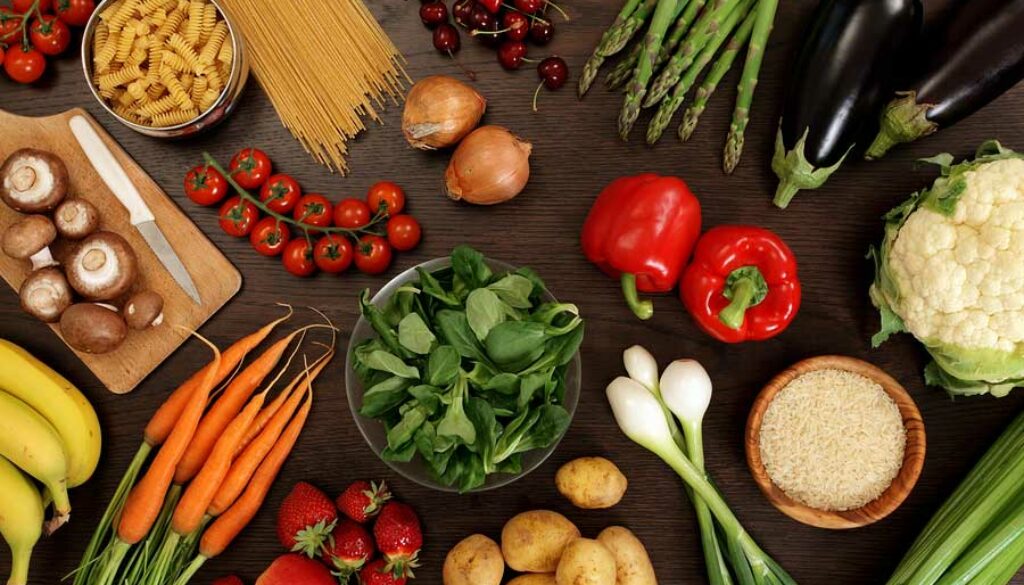Type 2 Diabetes? You’re at Risk for These 5 Diseases
Updated: June 2023
First, some good news: millions of Americans with diabetes can manage the disease and live healthy, strong lives. Through diet, exercise, taking insulin, and working with their doctors, they can avoid some of the diseases for which they are at greater risk.
The bad news? If not properly managed, Type 2 diabetes, can lead to serious—even fatal– health consequences.
Those with Diabetes Are At Risk for These Five Diseases
1. HEART DISEASE
Those with Type 2 diabetes are twice as likely to have heart disease than those who do not. In addition, they also tend to develop heart disease at a younger age.
Why?
Because over time, high glucose levels increase fatty deposits inside blood vessels. This decreases blood flow, increasing the risk of clogging arteries and hardening blood vessels. Of course, having a family history of heart disease further increases the risk.
2. STROKE
Narrowed blood vessels also place those with diabetes at a higher risk of strokes. A stroke occurs when the flow of oxygen is cut from the brain, usually caused by a collapsed blood vessel. It can have a devastating effect, causing paralysis or the inability to speak.
The good news is that 80 percent of strokes can be prevented, and the extent of their horrible aftermath can be prevented by getting help quickly. The National Stroke Association has a wealth of information about stroke signs and symptoms.
3. PERIPHERAL VASCULAR DISEASE (PVD)
Narrowing blood vessels can also cause PVD. In this condition, narrowed blood vessels block blood circulation in the legs.
Symptoms include:
- Leg cramps
- Numbness
- Fatigue
- Pain in the legs or buttocks
If you have diabetes, it’s a good idea to include this in your regular screening. Talk to your doctor if you have any of the symptoms.
4. KIDNEY DISEASE
Type 2 diabetes occurs when the body is unable to use insulin properly. When this happens, blood sugar (glucose) builds up in the system, putting a strain on the kidneys and injuring the small, delicate blood vessels within them.
As a result, the kidneys are not able to clean the blood properly, retaining water and salt, which can lead to weight gain and swollen ankles. Ten to 40 percent of those with type 2 diabetes will eventually develop kidney failure.
5. FOOT AND EYE COMPLICATIONS
Diabetic nerve damage hinders the ability to feel hot and cold, as well as pain. Those with diabetes may not realize that they have a foot injury, placing them at risk of developing an infection.
If diabetes is not well-managed, these complications may eventually lead to amputation. Glaucoma –a disease caused by pressure build-up in the eye—is another serious risk. If untreated, glaucoma can lead to blindness. Those with diabetes are 40 percent more likely to have glaucoma, and the risk increases with age.
Diabetes is a devastating diagnosis. It is frightening and often, overwhelming. Thankfully, our internal medicine physicians in Raleigh specialize in helping patients manage diabetes successfully. By taking precautions and following doctor’s orders, those with diabetes can dramatically reduce their risk of these diseases.
The Best Foods for Those with Type 2 Diabetes
If current trends continue, by 2050, one out of every three Americans will have Type 2 diabetes. This isn’t just a problem in the U.S.; it affects people across the globe.
According to the World Health Organization, the global prevalence of diabetes among adults over 18 years of age has risen from 4.7% in 1980 to 8.5% in 2014.
With statistics like that, you can understand why it’s so important to find the best foods for those with Type 2 diabetes
The good news is that diet, exercise, and a proactive healthcare plan can go a long way toward preventing diabetes or avoiding some of the serious complications that can result if you already have the disease. These complications include high blood pressure, heart disease, and stroke.
The Role of Nutrition in Diabetes Management
To manage your diabetes successfully, it’s important to have a diet based on solid nutritional evidence, not the latest fad that’s advertised on the internet. A healthy diet is a conscious effort to eat foods that provide the most benefit and nutrition to your body, which also prevents blood sugar spikes.
The American Diabetes Association has compiled a list of “superfoods,” which are foods packed full of vitamins, fiber, and minerals that should be a welcome addition to everyone’s plate. Let’s take a look at some of these foods and how they can help you.
5 Things Type 2 Diabetics Can Eat
Following a healthy diet for Type 2 diabetes is a multifaceted endeavor. The key is to eat nutritious food and follow your eating plan. We’ll be happy to create one tailored to your situation.
Typically, you’ll want to avoid eating too many carbs and find flavorful alternatives to foods high in saturated fats (we’ve outlined a few of them below).
1. DARK GREEN, LEAFY VEGETABLES
Consider these your most valuable players in the fight against heart disease and diabetes. Dark green, leafy vegetables such as spinach or kale are packed with vitamins A, C, E, and K in addition to iron and calcium. Even better, they’re low in calories and carbohydrates and provide good fiber.
2. WHOLE GRAINS
There’s a big difference between whole grains, which are a great addition to your diet, and processed grains, which are not ideal. Whole grains (such as brown rice) have not been milled. Therefore, the nutrients found in their bran and germ remain intact. Refined grains have been milled to remove their bran and germ.
According to information from the Mayo Clinic, while refined grains have a smoother texture and a longer shelf life, it comes at a cost: nutrients have been stripped from the food. When you have a choice, always look for whole-grain cereal and bread.
3. BERRIES
These are high in antioxidants no matter which ones you choose—blueberries, blackberries, or strawberries. They are a great alternative to sugary desserts (as long as you don’t add sugar to the berries), and they have vitamin C, vitamin K, potassium, and fiber.
4. FOOD HIGH IN OMEGA-3 FATTY ACIDS
What makes omega-3 fatty acids such a big deal? They can reduce the risk of heart disease and inflammation and therefore should be on everyone’s plate. Fish high in omega-3 acids include salmon, tuna, herrings, sardines, and trout.
The American Diabetes Association recommends eating these types of “fatty fish” twice a week. However, there’s one caveat: opt for grilled or broiled versions of these fish.
Breading and deep-frying not only create additional carbohydrates but also add other fats that should be limited.
If you don’t like fish, other foods high in omega-3 fatty acids include: flaxseed, walnuts, canola oil, and certain fortified brands of eggs, yogurt, and soy beverages.
5. NUTS
As mentioned above, nuts—particularly walnuts and flax seeds—are a good source of omega-3 fatty acids. Nuts also provide a lot of protein and are a wonderful snack alternative to sugary items.
How Many Carbs Should a Type 2 Diabetic Eat Daily?
No one answer fits everyone. You will have to tailor your carb intake to fit you, and a lot of that depends upon how much exercise you’re getting, your weight, your age, and other factors.
But don’t worry—we’ll work with you to ensure that you’re staying within target. The key is to manage the number of carbs you can eat, and safely stay within your target range
However, in general, the guideline is that you should strive to get half your calories from carbs.
Remember to eat the same amount of carbs at every meal. This will help you keep your blood sugar levels stable.
Again, this figure depends upon if you’re using an insulin pump, getting daily insulin injections, or if you take other insulin at mealtimes.
In addition, those with diabetes should consider the pros and cons of the following foods:
-
CANNED VEGETABLES
Certainly, canned vegetables are a better choice than fast food, but canned versions often contain a lot of sodium. If using canned vegetables, rinse them under running water to remove as much of the excess salt as possible.
-
FRUIT JUICES
Again, fruit is great for you, but many times these juices contain added high-fructose corn syrup or other kinds of processed sugar. Be sure to check the label. They are also missing fiber, which changes how our blood sugar reacts.
-
CANNED FRUIT
Often, this is packed in syrup, which contains high amounts of added sugar. So, if selecting canned fruit, make sure it’s packed in water instead of syrup.
Need Help Finding Wonderful, Flavorful, and Nutritious Foods? Speak With Our Dietitian
At Raleigh Medical Group, our full-time dietitian, Nicole Matala, will be happy to help you on your journey.
How to Manage Type 2 Diabetes
Managing Type 2 diabetes is a lifelong endeavor, and it can be challenging. That’s why we’re with you on this journey together. We’ll create a wonderful eating plan filled with nutritious, flavorful foods that will soon become your favorites.
Of course, living with diabetes is about much more than a healthy diet—it’s about working closely with your healthcare team to help you live the healthiest life possible.
Following are some tips to help you manage Type 2 diabetes:
- Always eat well-balanced meals that are high in vegetables. If you need help, we have some great ideas for you!
- Monitor your blood sugar. It helps to record your readings throughout the day. This will help you track your blood sugar, and it will assist us in following your progress.
- Find an activity you love. Exercise doesn’t mean running a marathon. Often, the key to establishing an exercise routine is to find something you enjoy doing. Maybe you prefer riding bikes to the treadmill or swimming to lifting weights. The important thing is that you establish a routine that you can stick with and have a great time doing so!
- Be aware of blood sugar spikes. Your blood sugar may spike when you are sick or under stress.
- Diabetes makes it more difficult for your body to fight infections, so know what to watch for. If you have any concerns, contact us. Always remember that we’re partners in your care.
- Keep a close eye on your feet. Often, those with diabetes may not realize that they have an injury to a foot. Because diabetes can cause circulation issues, these small wounds take longer to heal. That’s why it’s important to be proactive. Let us know immediately if you have a non-healing wound.
7 Ways You Can Prevent Type 2 Diabetes
By the year 2050, an estimated 1 in 3 Americans will have Type 2 diabetes. Currently, 1 in 10 adults has diabetes, and as the population ages, officials from the Centers for Disease Control predict these numbers will increase dramatically in the next 40 years. This makes diabetes prevention absolutely crucial, and many Americans even wonder, can Type 2 diabetes be reversed?
This problem isn’t limited to the United States. The World Health Organization states that 422 million people worldwide have diabetes, and the disease is particularly prevalent in low and middle-income countries.
Diabetes Prevention: 7 Ways You Can Prevent Diabetes
The key to diabetes prevention typically involves living a healthier lifestyle. But beyond that, many Americans aren’t aware of the specifics of diabetes prevention. We’ve outlined a few of the ways to prevent diabetes here:
Eat a healthy diet high in fruits and vegetables.
Our registered dietitian, Nicole Matala, will be happy to provide an individualized health plan for you, including nutritional guidelines.
If you’re overweight or obese, try to lose at least 5 to 10 percent of your current weight.
This can make a huge difference.
Don’t gain back the weight you have lost.
It’s all too easy to slip back into unhealthy habits, and Nicole Matala will be happy to work with you to ensure you stay on track after your healthy start.
If you smoke, you must quit.
Smoking can contribute to insulin resistance, which in turn leads to Type 2 diabetes. If you’re a smoker, schedule an appointment with us, and we’ll provide a helpful plan and list of resources to help you quit.
Have your blood checked regularly as a part of your annual checkup.
Often, prediabetes has no symptoms, so it’s important to ensure that your fasting blood sugar maintains a healthy level.
Get regular exercise.
We suggest getting 30 minutes of activity per day during the week. However, if you don’t feel like you’re able to start at that level, please talk to us. We can create a schedule to help you build up to a stronger body and get your activity level where it should be.
Know your family history.
If someone in your family has diabetes, you could be at greater risk of developing it. While there’s nothing you can do about your genes, having this knowledge will help you start taking preventative measures, now, instead of waiting until it’s too late.
Can Type 2 Diabetes Be Reversed?
The answer is not that simple.
Once someone is diagnosed with type 2 diabetes, can this be “reversed,” essentially making a person a non-diabetic? The answer is not clear. While research is ongoing, there is not enough evidence to provide a road map for reversing Type 2 diabetes.
However, there are a few clear things:
A healthy diet and regular exercise can help those with type 2 diabetes better manage their blood sugar levels. As a result, they may need to use less medication, but this is not a complete 100 percent “reversal” of the disease.
Prediabetes can be reversed, and it is much easier to prevent Type 2 diabetes than to try to “reverse” the illness. According to the Centers for Disease Control, without significant lifestyle changes, 15 to 30 percent of those with prediabetes will go on to develop type 2 diabetes. This clearly illustrates the importance of diabetes prevention.
Type 2 diabetes is not caused by any one factor. While a poor diet, obesity, and a sedentary lifestyle all increase the risk of developing type 2 diabetes, there are also genetic risk factors for the disease. These risk factors include family history and ethnicity. Those with family members who have Type 2 diabetes are more likely to develop it, as are those who are of African-American or Latino ethnicity.
The bottom line: Diabetes is a serious illness that, while there is no cure, can be managed. Regular blood sugar monitoring should be a part of an annual physical. Any of our physicians will be happy to discuss any concerns or questions you may have about diabetes and diabetes management.
Surprising Facts About Diabetes
It isn’t just prevalent in America.
While news headlines declare that Americans are as unhealthy as ever, Type 2 diabetes is not just occurring in record numbers in the United States. According to the World Health Organization, the prevalence of obesity and sedentary lifestyles has made Type 2 diabetes a worldwide epidemic.
Death from diabetes isn’t limited to impoverished countries.
Total deaths from diabetes are projected to rise by more than 80 percent in the next ten years in upper- and middle-income countries.
Type 2 is prevalent.
Type 2 diabetes is the most common form of diabetes–accounting for 90 percent of all cases worldwide.
Numbers are spiking.
In the past 32 years, the number of Americans with diabetes has quadrupled. Roughly 1.7 million new cases of diabetes are diagnosed each year. If the current trends continue, 1 out of every 3 adults will have diabetes by the year 2050.
The good news is, if caught early enough, Type 2 diabetes can be managed successfully. Even better, we can help you prevent diabetes through a healthcare plan tailored just for you.
What Are the Symptoms of Type 2 Diabetes?
If you find you’re always thirsty, going to the bathroom a lot, and you have blurred vision, you should schedule an appointment with us. These are some of the classic symptoms of Type 2 diabetes. In addition, those with Type 2 diabetes may experience fatigue.
Could You Have Diabetes and Not Know It?
Surprisingly, yes, you can have diabetes and be completely unaware of it. This is the truth for millions of Americans. The International Diabetes Federation estimates that 187 million people worldwide do not know that they have diabetes.
How could so many people be unaware that they have diabetes? We have been asked that many times. Patients may be surprised to learn that they have diabetes even though they “feel fine,” and they may have no family history of diabetes.
Many symptoms of diabetes are easily overlooked or often dismissed as harmless when they should be examined closely. Early treatment of diabetes can help patients avoid some serious complications, which can include blindness and even foot amputation.
Symptoms of diabetes include:
- Extreme thirst
- Cuts or bruises that heal slowly
- Urinating often
- Extreme fatigue
- Weight loss despite eating more
- Pain, numbness, or a tingling sensation in hands and feet
While these symptoms are typical, some with Type 2 diabetes may have symptoms that are so mild that they are virtually unnoticed. This is why it is important to have regular blood work completed as part of an annual physical.
Speak with one of our physicians in Raleigh about your fasting blood sugar levels and discuss any symptoms or problems you may be having.
According to the American Diabetes Association, nearly 79 million Americans have pre-diabetes and are at risk for developing type 2 diabetes . . . don’t you think it is important to know if you are one of them?
Are You at Risk for Type 2 Diabetes?
Millions of Americans are at risk of developing Type 2 diabetes. If you find yourself in one of these categories, you should schedule an appointment with one of our internal medicine physicians who can help you with diabetes prevention.
Risk factors include:
- Having prediabetes—in this condition, your blood sugar is not high enough to be considered diabetic but it is higher than normal.
- Being overweight or obese. (If you’re not sure, you can calculate your Body Mass Index for the answer.)
- A family history of diabetes.
- Having high blood pressure.
- Having a low level of HDL cholesterol (the good cholesterol).
- Having high triglycerides (the amount of sugar in the bloodstream).
- Leading a sedentary or inactive lifestyle.
- Having a history of heart disease.
- Having had a stroke.
- Having depression.
In addition, women who have had gestational diabetes, who have had a baby weighing more than 9 pounds, or who have had polycystic ovary syndrome are at higher risk.
What Is the Difference Between Prediabetes and Type 2 Diabetes?
Those with prediabetes have blood sugar levels higher than normal (an A1C level of 5.7% to 6.4% or a fasting blood sugar level of 100 to 125), but not high enough to be diagnosed with type 2 diabetes. Those with type 2 diabetes have a fasting blood sugar level of 126 or higher or an A1C level of 6.5% or higher.
Tips for Keeping Your Blood Sugar Under Control
If you’re prediabetic, it’s vital to keep your blood sugar under control for diabetes prevention. If you are diabetic, maintaining healthy blood sugar is vital to your overall health and helps you avoid complications.
Following are some useful tips for keeping your blood sugar under control:
Establish a regular exercise regimen
We enjoy helping patients outline exercise and fitness goals because it demonstrates that they want to take an active part in their health care. The frequency and time of day of exercise can have an impact on blood sugar.
Incorporate foods into your diet that have a low glycemic index (GI).
These foods provide nutrients such as calcium, potassium, fiber, magnesium, and vitamins A, C, and E.
What are these foods? Dark green, leafy vegetables (such as kale and spinach) that are low in calories and carbohydrates, citrus fruits, nuts, berries, and fish high in omega-3 fatty acids.
Beans are also another healthy consideration—while beans are considered starchy vegetables, they provide a good dose of protein with less saturated fat than meat.
Your blood pressure and lipids will have to be monitored regularly. To keep these parameters in strict control per ADA guidelines, you may require medication.
Planning ahead can help you avoid last-minute unhealthy menu choices or meals high in carbohydrates that can cause problems with blood sugar levels.
When traveling, remember that if you are crossing several time zones, your body may need time to adjust to the change. We encourage our patients to speak with us about their travel plans so we can answer any questions they may have.
Remember that if you are traveling by plane, you may need to have a letter from a physician explaining that you have diabetes, and need to carry testing supplies and insulin (if you use it) on board.
Some countries require visitors to receive specific immunizations, and sometimes these shots can affect blood sugar levels, so we encourage patients to get these shots a month before they travel.
When it comes to keeping blood glucose levels under control, there is no “one-size-fits-all” solution. This is why, as physicians, we tailor every healthcare plan to address specific issues. This is also why those with diabetes should work with their doctors to create an effective, team-based approach to managing it.
Diabetes Statistics
According to the Centers for Disease Control:
- More than 30 million Americans have Type 2 diabetes.
- Often, those with diabetes don’t know they have it.
- Roughly 1 in 4 Americans have diabetes and don’t realize it.
- 1 in 3 Americans have prediabetes, and 90 percent of them aren’t aware of it.
- The estimated cost of diabetes was $327 billion in 2017.
- 84.1 million adults aged 18 and over have prediabetes. This is 33.9 percent of the U.S. population.
- 23.1 million adults 65 years old and older have prediabetes.
- 18 percent of pregnant women develop gestational diabetes.
Internal Medicine Physicians Are Uniquely Qualified to Treat Type 2 Diabetes
One of the things that differentiate internal medicine physicians from other specialties, is that we take a holistic approach to the whole patient. We not only examine the health and well-being of your body’s system, but we look for how a problem in one part of your body can affect another part.
This is one reason why we’re experts at treating those with long-term, chronic health conditions. We’re also well-versed in caring for those with more than one serious health problem.
Raleigh Medical Group: Partnering With Patients to Control Type 2 Diabetes
Managing diabetes is about much more than a number on a meter; that’s why we partner with our patients to help them make healthy choices and learn more about their illnesses.
Our internal medicine physicians in Raleigh not only deal with the prevention, diagnosis, and treatment of adult diseases, but we also assist patients who have more than one chronic health problem.
This places us in a unique position to help our patients manage Type 2 diabetes.
We also have a registered dietitian on staff who is available for consultations and to build your nutrition plan.
Contact us for more information about how you can keep your diabetes under control while also adding fabulous foods to your menu. If you don’t know your blood sugar numbers or you’re showing signs of any of the symptoms listed in this article, we urge you to schedule an appointment with us as soon as possible.




